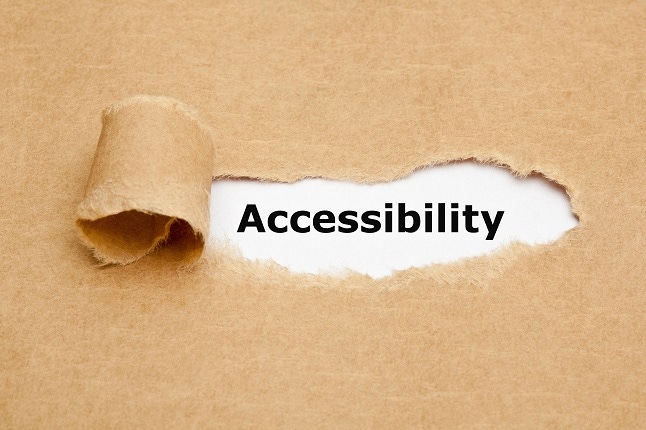How to Improve Workplace Accessibility With Assistive Tech
Here are three strategies leaders can use to build inclusive cultures and leverage assistive technology to create more accessible workplaces.

Accessibility isn’t a nice-to-have in the modern workplace -- it’s a necessity for all employees.
True accessibility at work involves cultural and technological components. Culturally, it’s about rethinking assumptions of what accessibility means, including whom it benefits. On the information technology side, accessibility becomes possible when employees have access to the tools that enable their full participation. The good news is that today’s assistive technologies make broad inclusion more possible than ever.
Here, I offer three key strategies leaders can use to build more accessible workplaces -- and explain why these small shifts can make work more inclusive for everyone.
Strategy 1: Identify what accessibility is and who it’s for (hint: everyone)
An accessible product, service, or workplace is designed for use by as many people as possible. The reality is that accessibility as a concept isn’t just about ability or disability -- it’s about people and removing the barriers that prevent people from participating fully in the workplace.
Today’s workforce is more diverse than ever, bringing a multitude of experiences, perspectives, and insights to their teams. As leaders, we must recognize disability as one of many types of human diversity that enriches our workplaces in important ways.
But it’s important to understand that disability status isn’t fixed, as accessibility needs can change throughout our lifetimes. For instance, our disability needs can be permanent (e.g., color blindness) or temporary (e.g., crutches following a surgery). Many people also have situational accessibility needs, such as benefiting from noise canceling headphones in loud settings.
This is why workplace cultures that center accessibility benefit everyone. In fact, research shows widespread support for accessibility among workers: Regardless of disability status, over ⅘ of workers agree that their workplaces would benefit from greater accessibility.
Strategy 2: Reframe accessibility as a leadership priority
Accessibility is often misunderstood as just an HR or IT issue, but leadership plays a critical role in creating an accessible workplace. Leaders should speak up about prioritizing accessibility and inclusion, positioning these as non-negotiables for the company as a whole.
Similarly, leaders need to be mindful of using inclusive language, and avoid any colloquialisms that are unintentionally offensive. For example, saying “that’s crazy” to express surprise or “don’t mind my OCD” in reference to attention to detail might be received as microaggressions against those who struggle with their mental health.
Accessible work cultures are proactive, rather than reactive -- another important opportunity for leaders to walk the talk and make accessibility a priority for all. Research shows that up to 76% of employees and 80% of leaders with disabilities have not disclosed their status fully at work. To create an environment in which people at every level feel comfortable opening up about their accessibility needs, change must start from the top.
Strategy 3: Combine assistive tech with cultural change to maximize impact
Assistive technology doesn’t have to be complicated and, in many cases, an easy-to-use, economical solution can make all the difference for employees. For instance, AI closed captioning and transcription tools mean video presentations or meetings are more accessible than ever for employees who are deaf or have auditory disabilities. Many operating systems today provide assistive technologies built in for free. For example, VoiceOver is included for free on both macOS and iOS, Windows includes Narrator, and ChromeOS has ChromeVox.
In fact, many tools that we use every day count as assistive technologies. Noise canceling headphones and white noise machines can help neurodivergent workers who might struggle to focus with auditory distractions -- great examples of technology that benefit many workers in different ways.
With Accessibility and Inclusion, Workers and Companies Can Thrive
Building accessible and inclusive workplaces is more important than ever -- and it’s incumbent on leaders to take up the challenge.
By developing a deeper understanding of what accessibility entails and then committing to it at all levels of the company, leaders can have a tremendous impact on both their team members and the business overall. Combining these cultural shifts with the convenience of modern assistive technologies takes accessibility to the next level.
When it comes to accessibility at work, small changes can make a world of difference -- and are a win-win for leaders, organizations, and workers alike.
About the Author(s)
You May Also Like
How to Amplify DevOps with DevSecOps
May 22, 2024Generative AI: Use Cases and Risks in 2024
May 29, 2024Smart Service Management
June 4, 2024







